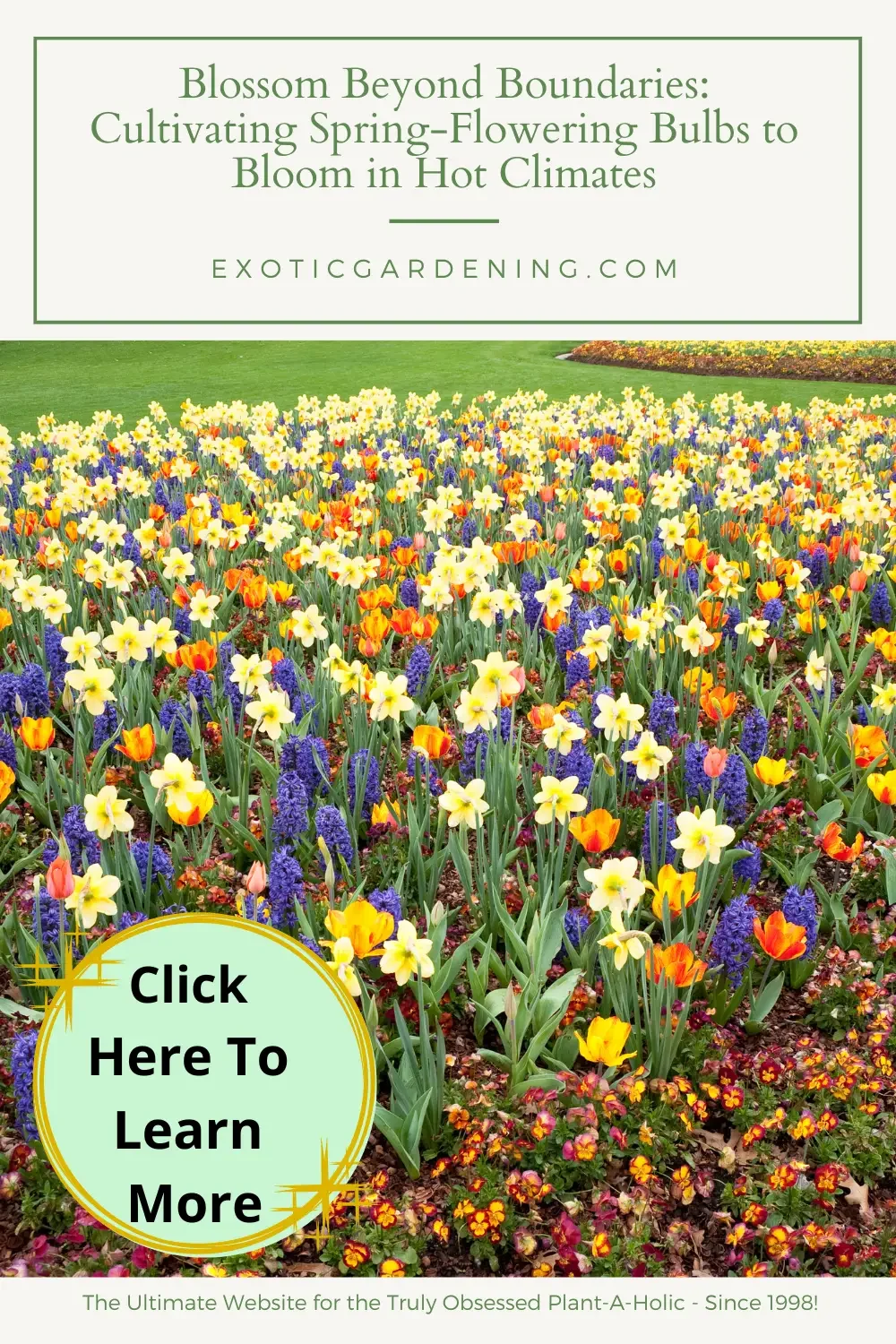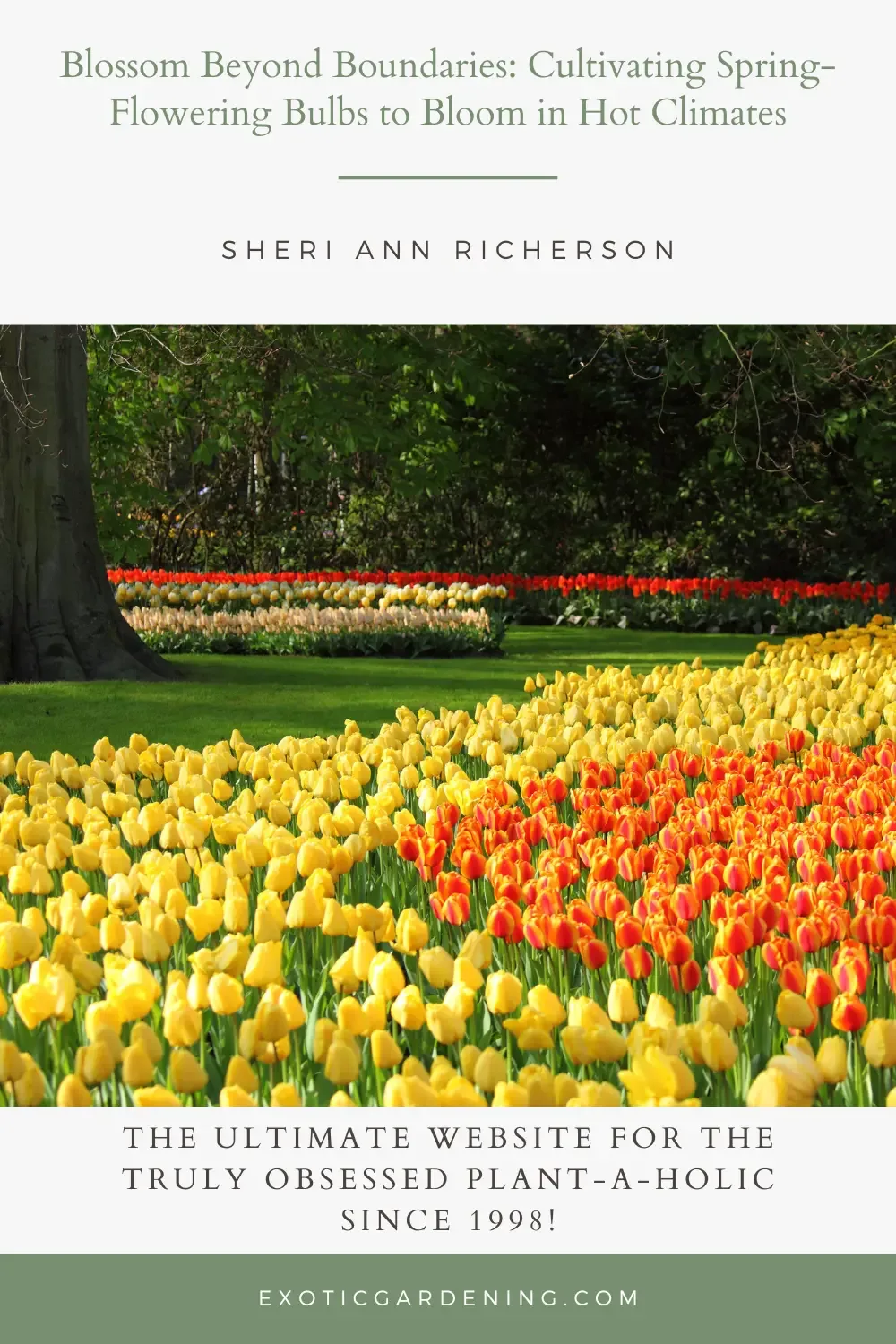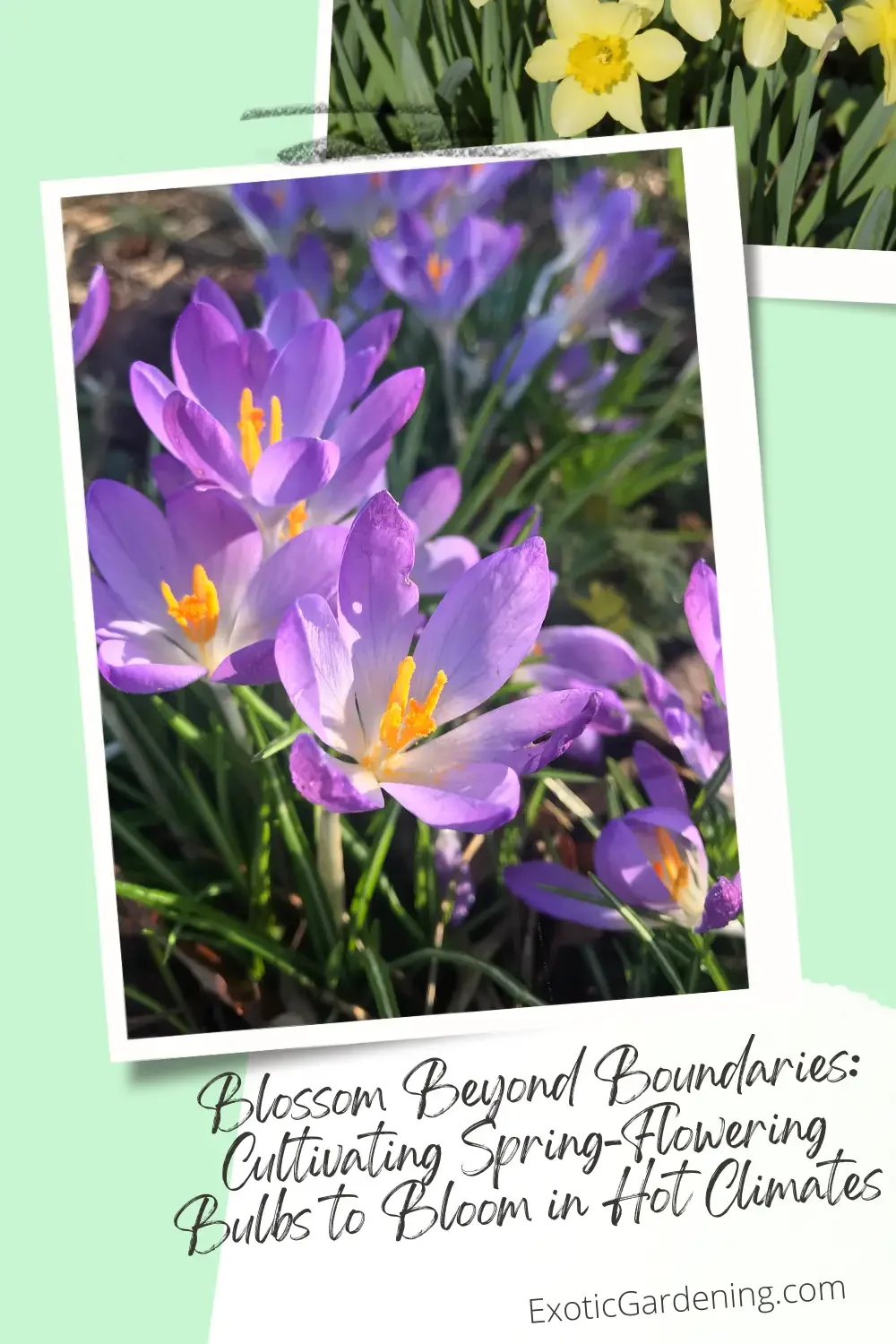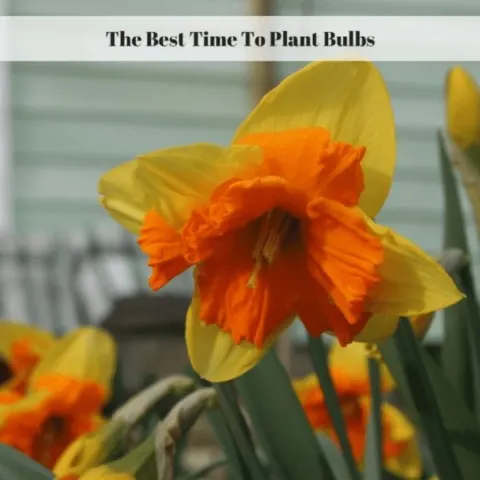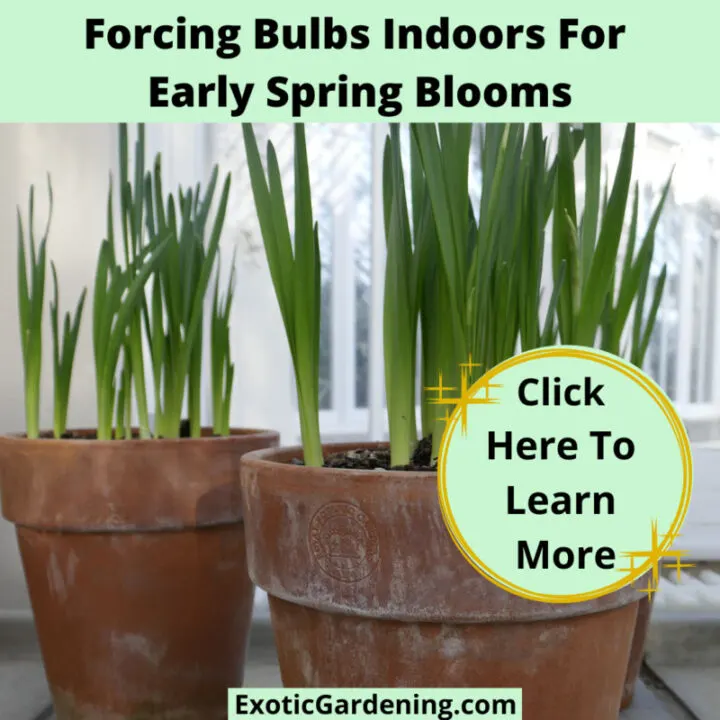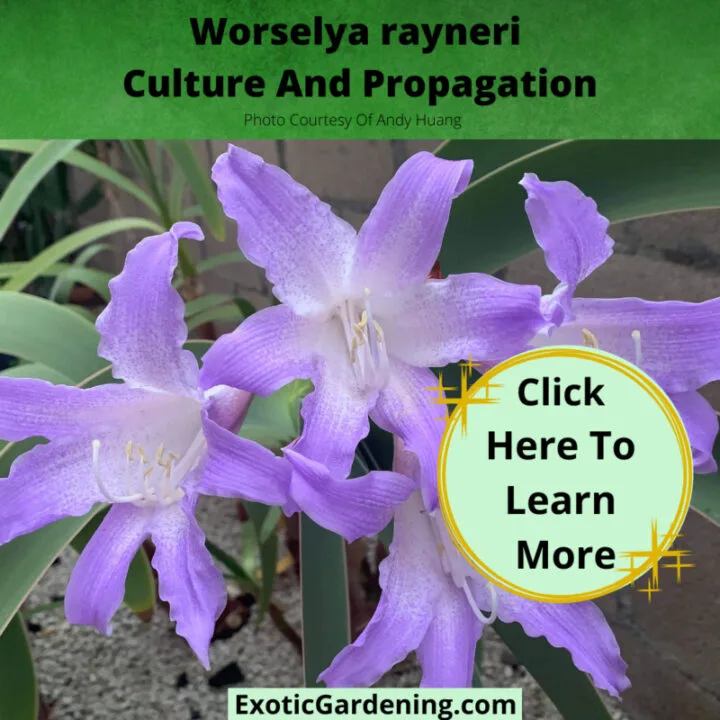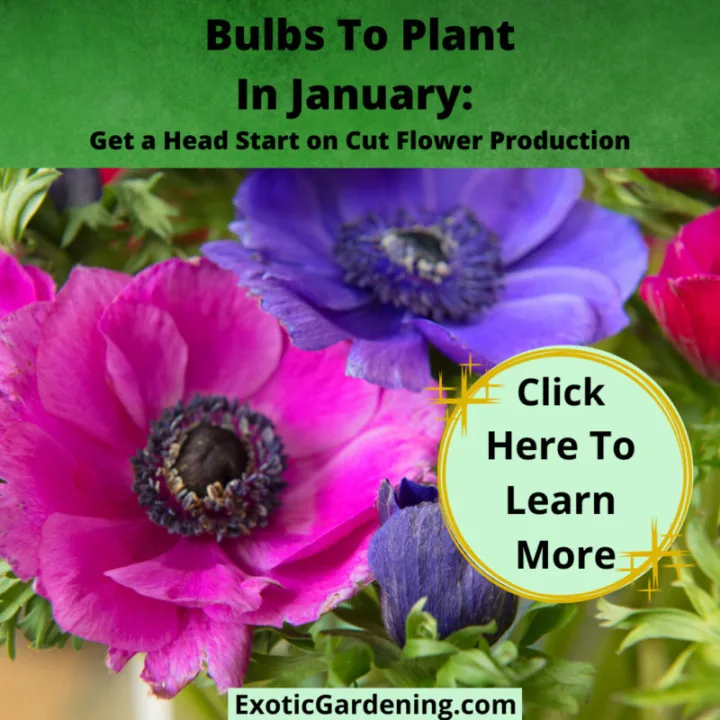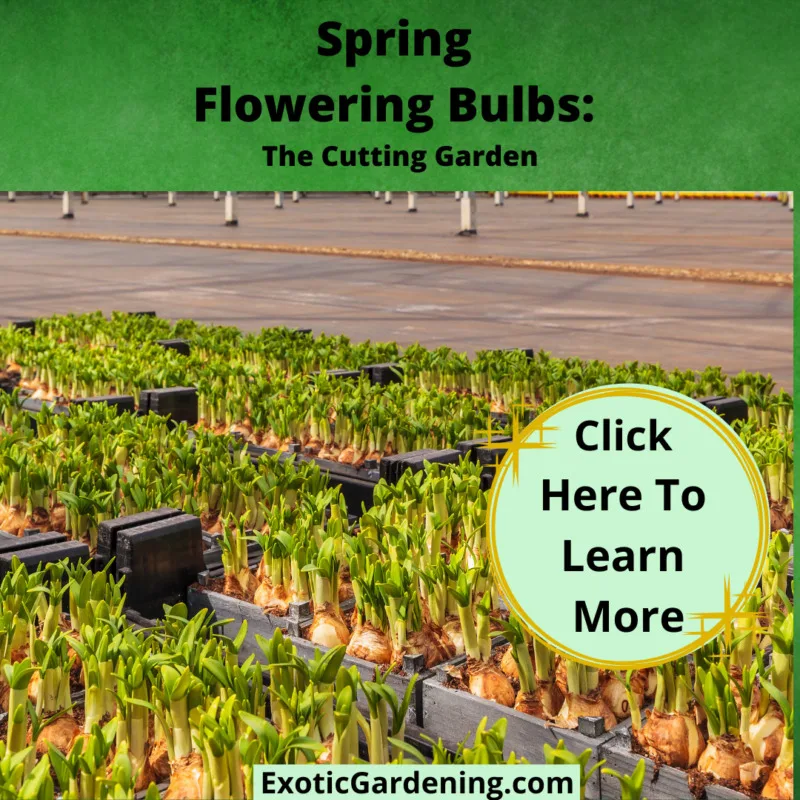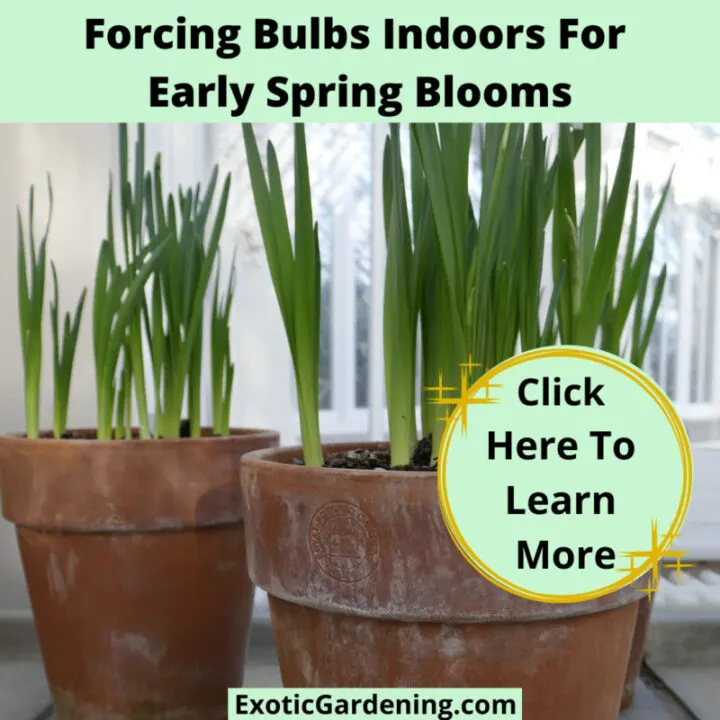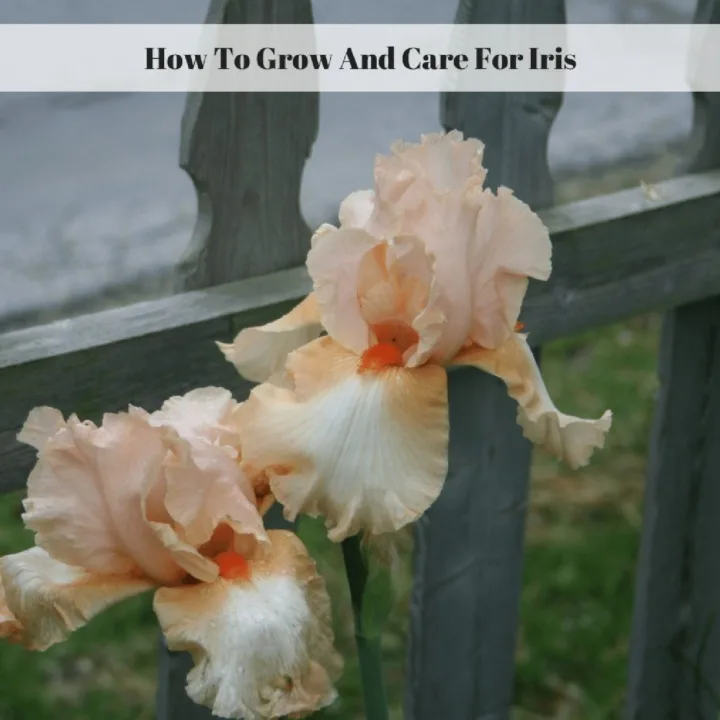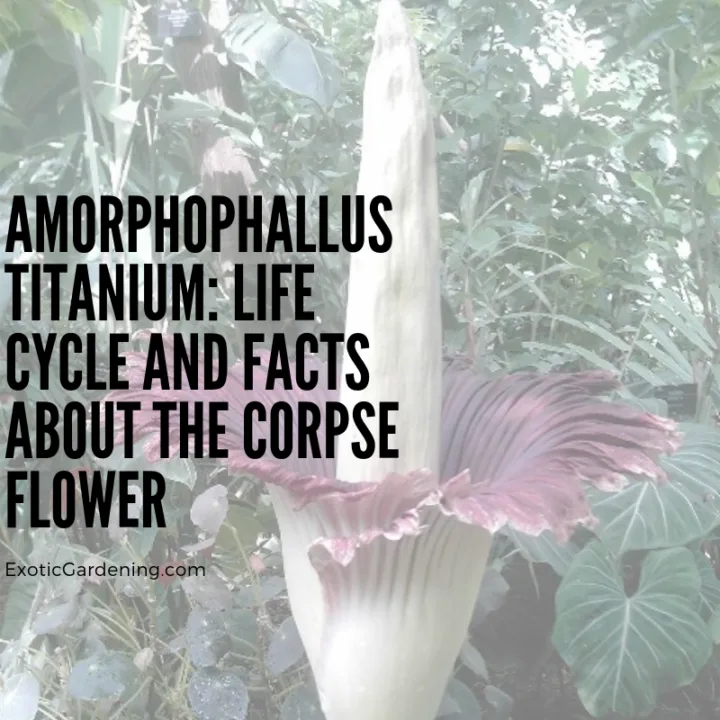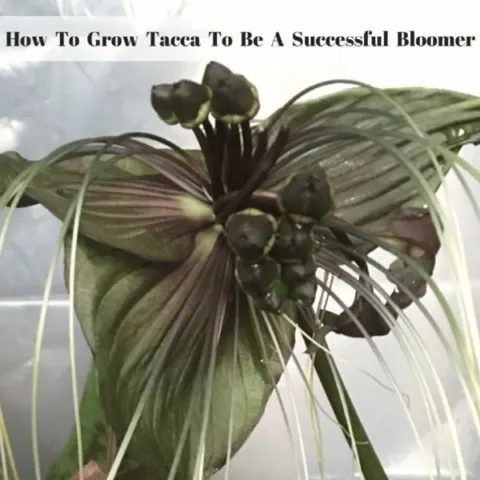Hey there, fellow gardening aficionados!
If you’ve ever gazed longingly at tulips, crocus, and hyacinths, wondered how to get bulbs to bloom in hot climates, you’re in for a treat.
We’re about to spill the beans on how to turn this dream into a reality.
Picture this: vibrant blooms, against all odds, thriving in your sun-drenched garden.
It’s not just possible; it’s totally doable!
So, what’s the secret sauce?
It’s all about chilling, timing, a dash of experimentation, and getting cozy with your gardening zone.
Let’s dive in, chat about these tricks, and unveil the enchantment of making these bulbs bloom brilliantly, even in the hottest of climates!
Chillin’ in the Crisper: The Cool Secret to Bulb Success
Now, let’s dive deeper into the art of bulb chilling.
It’s like giving your future blooms a rejuvenating spa treatment before their big debut in your garden.
The Refrigerator Retreat
Imagine your refrigerator as a luxurious resort for your bulbs.
Specifically, the crisper drawer is their exclusive VIP suite.
Why the crisper?
Well, it’s designed to maintain a constant temperature between 35 to 45 degrees Fahrenheit, mimicking the cool conditions that many spring-flowering bulbs need to break their dormancy.
The Time Factor
Here’s where the magic happens.
You want to let your bulbs chill out for a minimum of 8 weeks, but if you can manage it, consider extending their cool vacation for up to 14 weeks.
This extended chill time allows the bulbs to reset and prepare for their magnificent show in your garden.
During this chilling period, a fascinating transformation occurs within the bulb.
It’s like the bulb’s way of storing energy and gearing up for the grand spring awakening.
This process, known as vernalization, is essential for many bulbs to bloom successfully, especially in warmer climates where they might not receive the natural cold exposure they need.
So, as you place those bulbs into the crisper drawer, you’re essentially giving them a front-row ticket to their own rejuvenation retreat.
When the time is up, they’ll be bursting with energy and ready to dazzle your garden with their vibrant colors and delicate fragrances.
But remember, patience is key here.
Don’t rush the process, and resist the temptation to remove them too soon.
Let your bulbs luxuriate in their chilly hideaway, and you’ll be rewarded with a breathtaking floral display that defies the hot climate odds.
Keep the Fruits at Bay: Shielding Bulbs from Ethylene’s Mischief
As your bulbs embark on their cool sojourn in the refrigerator, it’s essential to be vigilant and protect them from a potential saboteur: ripening fruits.
Here’s why keeping these two away from each other is crucial for your bulb’s well-being.
The Ethylene Enigma
First, let’s decode the mystery of ethylene gas.
This invisible, odorless substance is a natural plant hormone produced by fruits during their ripening process.
While it’s a signal for fruits to mature and turn deliciously ripe, it can wreak havoc on the delicate process happening within your bulbs.
The Bulb’s Hidden Transformation
Inside that seemingly unassuming bulb lies a remarkable transformation in progress.
It’s like a flower-in-waiting, biding its time until the conditions are perfect for its grand debut.
This process, as mentioned earlier, is vernalization, where the bulb responds to the cold by preparing itself for flowering.
The Ethylene Threat
Now, let’s bring ethylene into the picture.
When bulbs are exposed to ethylene, it’s akin to introducing a mischievous troublemaker into their serene retreat.
Ethylene can interfere with the bulb’s internal clock, disrupting the delicate balance of hormones responsible for flowering.
It’s like inviting chaos into a peaceful sanctuary.
The Consequences
If ethylene disrupts this crucial process, it can lead to a compromised bloom or, in the worst-case scenario, no bloom at all.
After all the anticipation and effort, this would be quite the disappointment for any gardener.
The Safe Distance
So, while your bulbs are chilling, ensure they remain at a safe distance from any ripening fruits in your fridge.
Keep them in a separate compartment or container to shield them from ethylene’s effects.
This simple step ensures that when it’s time for your bulbs to awaken and shine, they do so without any interference, and your garden bursts into a symphony of color and fragrance.
In essence, by keeping fruits and bulbs apart during this critical phase, you’re acting as a protective guardian of your garden’s future beauty.
Your efforts to safeguard against ethylene’s mischief will pay off handsomely when those bulbs finally awaken and put on a show-stopping display in your hot climate garden.
Timing is Everything: Awaiting the Grand Debut
After patiently nurturing your bulbs in the cool embrace of your refrigerator, it’s time for the main event.
But, as they say, timing is crucial!
As the long-anticipated chilling period draws to a close, it’s showtime!
When those bulbs emerge from the cool confines of your fridge, don’t let them wait around.
Plant them immediately, giving them the best possible chance to flourish.
Delaying this step can disrupt their internal schedules, so seize the moment, and your garden will thank you with a breathtaking spring spectacle.
Experiment and Succeed: Let Creativity Bloom
Now that you’re armed with the knowledge of proper chilling and planting, it’s time to let your creative juices flow.
Don’t be shy; experiment with your bulb garden!
Mix and match your bulbs with perennials, create stunning hillside arrangements, or design unique floral displays.
The key here is to have fun and apply the techniques you’ve learned.
Gardening is an art, and your garden is your canvas.
So, paint it with the vibrant colors of your favorite bulbs and watch your creativity bloom alongside your flowers.
Know Your Zone: The Local Garden Code
Here’s a pro tip that can make all the difference: get to know your gardening zone.
Think of it as the secret code to a flourishing bulb garden.
Your local climate and conditions play a pivotal role in determining which bulbs thrive in your area.
Different bulbs have different preferences, and aligning them with your zone is like finding the perfect match.
So, do your research, consult your gardening zone map, and choose bulbs that are tailor-made for your specific location.
This way, your garden will flourish effortlessly, showcasing the most dazzling blooms that your climate can offer.
Unlocking Blooming Brilliance: Your Path to a Lush Garden Oasis
In conclusion, if you’ve been longing for a breathtaking bulb display in your hot climate garden, consider these tips your golden ticket to success.
Remember, it’s all about chilling your bulbs to perfection, planting them with precision, embracing your creative side, and aligning your choices with your gardening zone.
These elements combined will unlock the brilliance of your garden, transforming it into a lush oasis that defies the challenges of your climate.
So, roll up your sleeves, get your hands dirty, and embark on this floral adventure.
With the right knowledge and a touch of creativity, your garden will burst into vibrant life, creating an enchanting springtime spectacle that will leave you and your guests in awe.
FAQs for Spring Flowering Bulbs:
Q: What are spring flowering bulbs?
A: Spring flowering bulbs are plants that produce flowers in early spring, typically from bulbs or corms, such as tulips, daffodils, and crocuses.
Q: When is the best time to plant spring flowering bulbs?
A: Fall is the ideal time to plant spring flowering bulbs, usually from September to November, before the ground freezes.
Q: Can I plant spring flowering bulbs in hot climates?
A: Yes, you can plant spring flowering bulbs in hot climates by using proper techniques like chilling them in the refrigerator.
Q: How deep should I plant spring flowering bulbs?
A: The general rule of thumb is to plant bulbs at a depth that is two to three times the height of the bulb.
Q: Do spring flowering bulbs need full sun?
A: Most spring flowering bulbs prefer full sun, which means at least 6 hours of direct sunlight per day for optimal blooming.
Q: How often should I water spring flowering bulbs?
A: Water spring flowering bulbs moderately after planting and during dry spells, but avoid overwatering, as bulbs can rot in soggy soil.
Q: Can I leave spring flowering bulbs in the ground after they bloom?
A: Yes, you can leave bulbs in the ground after they bloom, but it’s essential to allow the foliage to die back naturally to store energy for the next season.
Q: Can I grow spring flowering bulbs in hot climates like Arizona or Texas?
A: Yes, it’s possible to grow spring flowering bulbs in hot climates with proper care, including chilling the bulbs.
Q: How do I chill spring flowering bulbs in a hot climate?
A: Store the bulbs in a refrigerator for the required chilling period to mimic cold winter conditions.
Q: What spring flowering bulbs are best for hot climates?
A: Bulbs like Dutch iris, Anemone, Freesia, Ranunculus and Scilla are more heat-tolerant and suitable for hot climates.
Q: Is it possible to grow tulips in hot climates?
A: Yes, you can grow tulips in hot climates by chilling the bulbs and providing them with the right conditions.
Q: What is vernalization, and why is it essential for spring flowering bulbs in hot climates?
A: Vernalization is the cold treatment that spring flowering bulbs require to break dormancy, making them bloom successfully in warmer climates.
Q: Can I mix spring flowering bulbs with other plants in a hot climate garden?
A: Absolutely! Mixing bulbs with heat-tolerant perennials and shrubs can create a visually stunning garden display.
Q: Are there any natural methods to protect spring flowering bulbs from extreme heat?
A: You can use mulch to insulate the soil and provide shade during the hottest part of the day to protect bulbs from extreme heat.
Q: How do I know which spring flowering bulbs are best for my specific hot climate zone?
A: Check your local gardening zone map and consult with local experts to determine which bulbs thrive in your particular hot climate zone.
Bulbs and Rhizomes
Daylilies: Attractive, Colorful, Easy To Grow Garden Gems
Daylilies are popular garden plants that are colorful, easy to grow and multiply rapidly. They are also drought tolerant.
Worselya rayneri Culture And Propagation
Learn how to grow, flower and propagate the endangered plant, commonly known as the Empress Of Brazil, Worseyla rayneri.
How To Grow Amaryllis
Learn how to grow Amaryllis from seed as well as how to care for your Amaryllis plant indoors and what to do with it after flowering.
Bulbs to Plant In January: Get a Head Start on Cut Flower Production
Plant bulbs in January in a heated greenhouse to get a head start on cut flower production. Then interplant herbs, vegetables and annuals.
Spring Flowering Bulbs: The Cutting Garden
Plant spring flowering bulbs in the greenhouse or even indoors in February and March for gorgeous blooms in spring or mid-summer.
Forcing Bulbs Indoors For Early Spring Blooms
Forcing bulbs indoors is a great way for those without greenhouses to have flowers in bloom during the winter months.
How To Grow And Care For The Albuca Species
Learn how to grow and care for the Albuca species. While most people start with a live plant, seed starting information is also included.

